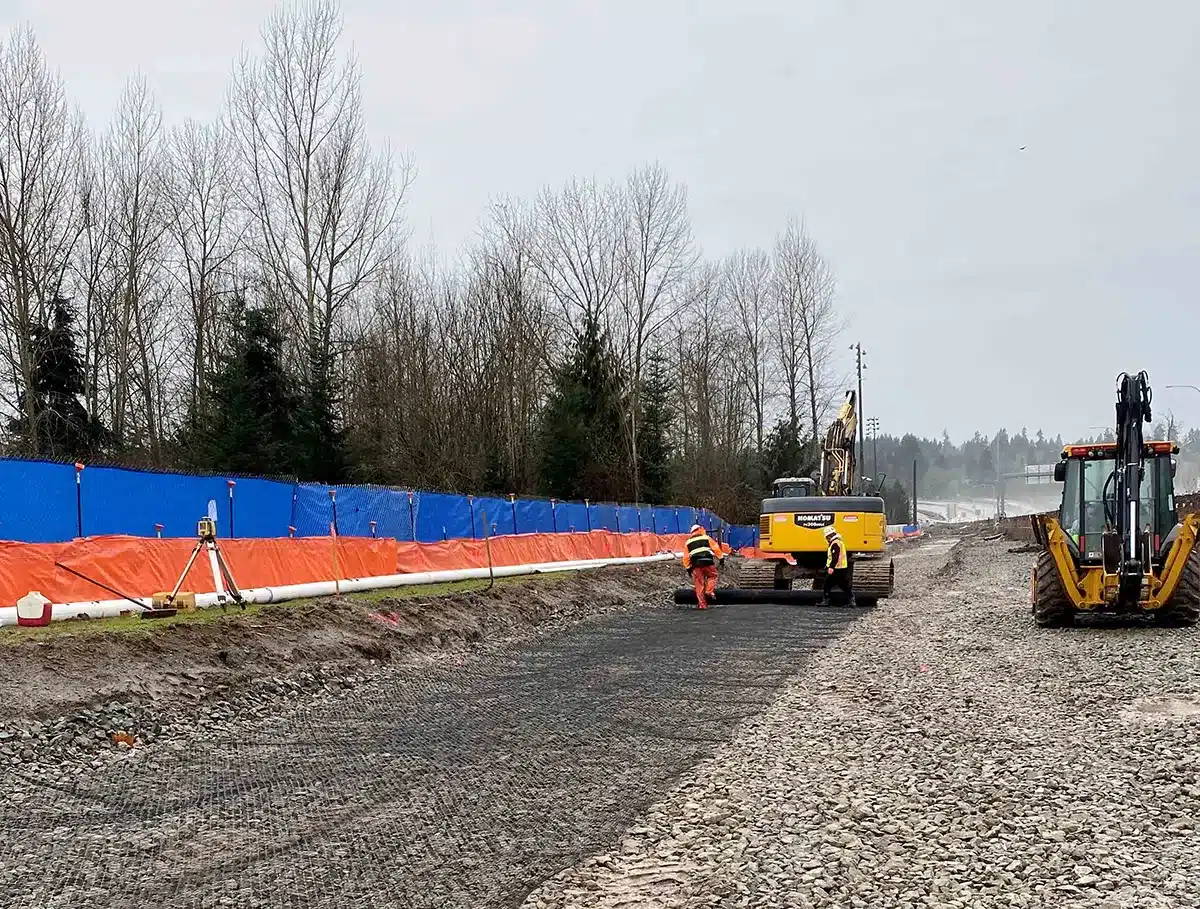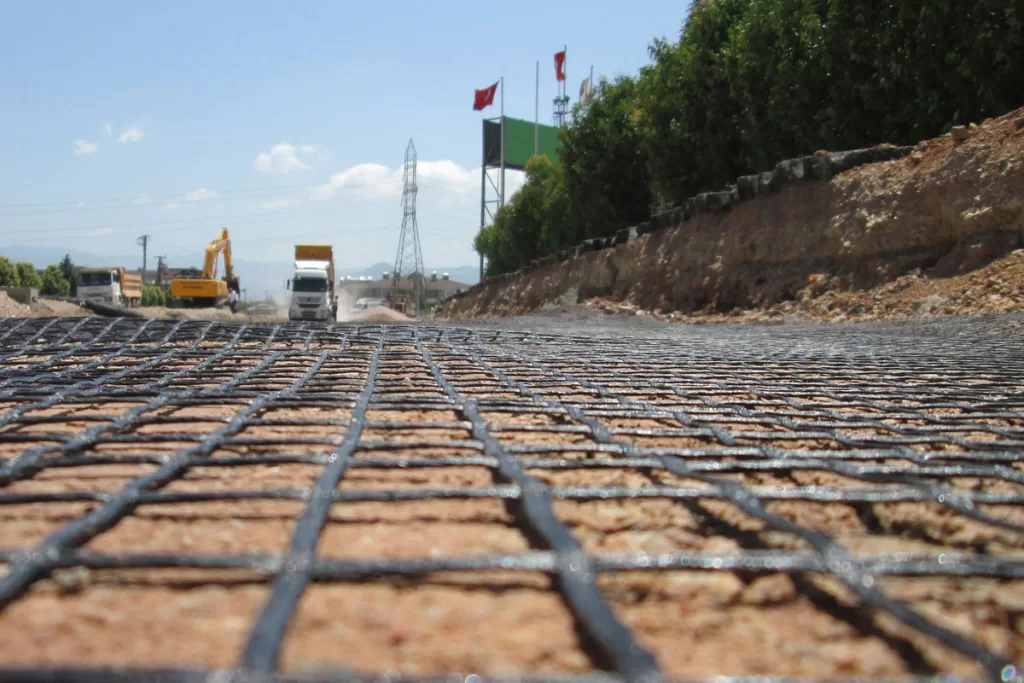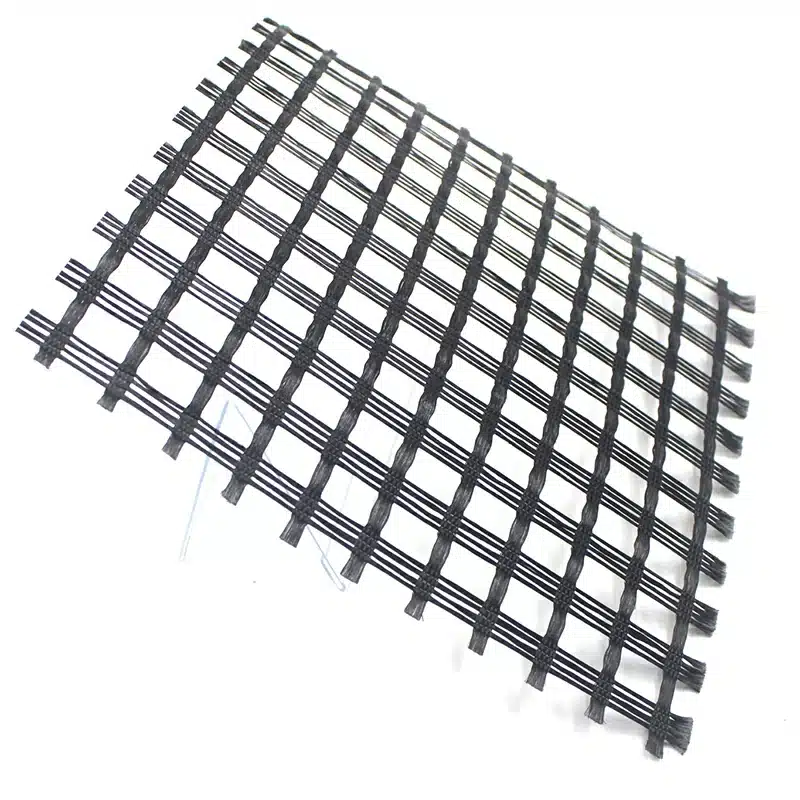+86-159 9860 6917
info@geofantex.com
geofantex@gmail.com
+86-400-8266163-44899
The stability of slopes, whether natural or engineered, is a critical concern in geotechnical engineering and landscape architecture. This is where the concept of geogrids enters the picture, providing a solution that enhances slope stability and prevents soil erosion. One of the key factors determining the effectiveness of geogrids in slope stabilization is the spacing between the layers. In this article, we delve into the significance of geogrid layer spacing, explore how many layers are typically required for effective slope reinforcement, discuss techniques for stabilizing steep slopes, and introduce the concept of geogrid-reinforced soil slopes. We aim to shed light on the role of geogrids in slope stability and provide insights into their application and benefits.
What is the spacing of geogrid?
When installing geogrid for soil stabilization projects, the spacing between geogrid layers is a critical factor to ensure effective reinforcement. Here is the detailed information:
Spacing Requirements for Geogrid Installation
General Guidelines:
- Vertical Spacing: The vertical distance between geogrid layers typically ranges from 6 inches to 18 inches, depending on the project requirements and soil conditions.
- Horizontal Spacing: The geogrid should be placed continuously across the area to be stabilized without any gaps or overlaps.
Factors Influencing Spacing:
- Soil Type: Different soil types (e.g., sandy, clayey) require different spacing to achieve optimal reinforcement.
- Load Requirements: Higher load-bearing requirements may necessitate closer spacing between geogrid layers.
- Project Design Specifications: Always refer to the specific design requirements provided by the project engineers.
Installation Tips:
- Ensure proper tensioning of the geogrid to avoid sagging.
- Overlap geogrid sections by at least 12 inches at the edges if multiple pieces are used.
- Secure the geogrid in place with suitable anchoring methods to maintain spacing during backfilling.
Example Applications
- Roadway Construction: For reinforcing roadways, vertical spacing of 12 inches between geogrid layers is commonly used.
- Retaining Walls: When reinforcing retaining walls, geogrid layers are often spaced every 8 inches vertically.
The specific spacing of geogrid layers is determined by the project’s design and soil conditions. Adhering to the recommended guidelines and consulting with a geotechnical engineer will ensure the effectiveness of the soil stabilization project.

How many layers of geogrid do I need?
The number of layers of geogrid required depends on various factors, including the project type, soil conditions, and load requirements. Here is a structured approach to determine the number of layers needed:
Project Type:
- Retaining Walls: Typically requires multiple layers, spaced at specific intervals based on wall height.
- Road Construction: Depends on the road design and expected load. Often 1-2 layers are used for base reinforcement.
Soil Conditions:
- Weak Soils: More layers may be needed to distribute loads effectively and improve stability.
- Strong Soils: Fewer layers may be sufficient.
Load Requirements:
- Light Loads: Fewer layers are required (e.g., pedestrian walkways).
- Heavy Loads: More layers are needed (e.g., highways, heavy-duty pavements).
Spacing and Depth:
- For retaining walls, layers are typically spaced every 0.5 to 1 meter vertically.
- For road bases, layers are placed within the top 0.3 to 0.6 meters of the subgrade.
Engineering Recommendations:
- Always consult with a geotechnical engineer to tailor the number of layers to your specific project conditions.
How do you stabilize a steep slope?
Stabilizing a steep slope typically involves a combination of engineering and environmental techniques to prevent erosion, landslides, or other hazards. Here are some common methods:
- Retaining Walls: Building retaining walls with materials like concrete, timber, or stone can help hold back soil and prevent it from sliding down the slope.
- Terracing: Creating terraces or steps along the slope can reduce its steepness and provide flat areas where vegetation can grow, helping to stabilize the soil.
- Slope Grading: Adjusting the slope’s gradient through grading and shaping techniques can improve stability by reducing the angle of inclination.
- Vegetation: Planting vegetation with deep root systems can help bind soil together and prevent erosion. Grasses, shrubs, and trees can all play a role in stabilizing slopes.
- Geotextiles and Erosion Control Matting: Installing erosion control fabrics or matting can help stabilize soil while vegetation becomes established.
- Drainage Systems: Proper drainage is crucial to prevent water buildup, which can weaken slope stability. Installing drainage pipes, swales, or French drains can divert water away from the slope.
- Rock or Gabion Baskets: Placing rocks or Gabion baskets along the slope can provide additional stability by adding weight and preventing soil movement.
- Soil Nailing and Anchoring: For particularly unstable slopes, soil nailing or anchoring systems can be used to reinforce the soil and prevent landslides.
- Bioengineering Techniques: Bioengineering involves using natural materials like live stakes, fascines, and brush layers to stabilize slopes while promoting ecological restoration.
- Monitoring and Maintenance: Regular monitoring of slope stability and maintenance of stabilization measures are essential to ensure long-term effectiveness.
The specific method or combination of methods used will depend on factors such as slope gradient, soil type, climate, and budget constraints. Consulting with a geotechnical engineer or landscape architect can help determine the most appropriate stabilization measures for a particular slope.

What is geogrid reinforced soil slope?
A geogrid-reinforced soil slope is a type of slope stabilization method used in civil engineering and geotechnical projects. It involves the use of geogrids, which are synthetic materials typically made from polymers like polypropylene or polyester. These geogrids are placed within the soil mass to enhance its stability and strength.
Here’s how it typically works:
- Soil Reinforcement: Geogrids are installed within the soil at specified intervals and depths. These geogrids act as tensile elements, distributing the tensile forces within the soil mass and improving its overall stability.
- Interlocking Mechanism: As the soil settles around the geogrid, an interlocking mechanism is formed. This interlocking improves the shear resistance within the soil mass, preventing it from sliding or collapsing.
- Slope Angle: Geogrid-reinforced soil slopes allow for steeper slope angles than traditional slopes without reinforcement. This can be particularly beneficial in situations where space is limited or where there’s a need to minimize the footprint of the slope.
- Vegetation: In some cases, vegetation may also be incorporated into the reinforced soil slope to further enhance stability and provide environmental benefits such as erosion control.
Overall, geogrid-reinforced soil slopes offer an effective and economical solution for stabilizing slopes in various engineering and construction projects, including highway embankments, retaining walls, and landfill slopes.
The application of geogrids in slope stabilization marks a significant advancement in geotechnical engineering, providing a reliable and efficient solution for managing slope stability. The spacing and number of geogrid layers play pivotal roles in the effectiveness of slope reinforcement, necessitating careful planning and geotechnical analysis. By integrating geogrids with other stabilization techniques, steep slopes can be successfully stabilized, thereby preventing erosion and ensuring the longevity of the structure. The concept of geogrid-reinforced soil slopes further underscores the importance of combining engineering principles with innovative materials to address complex challenges in slope management.



Get Free Sample
We’ll respond as soon as possible(within 12 hours)





















